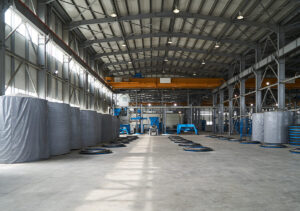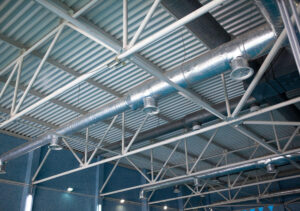Congratulations! So, you found the perfect commercial place for your business! But just before you sign the contract, consider first what tenant improvements you are allowed before you start designing your space as per your needs.
What is “Tenant Improvements”
Tenant improvements or leasehold improvements are simply the bespoke interior finish or build-outs that a landlord or tenant will do on a specific commercial rental space for the benefit of the lessor. The rental space could be an office, shop, or warehouse.
The reason you need to hold your horses (if you are the possible tenant) before signing that commercial lease contract is because you need to be fully aware of the terms on alterations you or your landlord can do to the space. You do not want to spend money making improvements only to find out your landlord is against it, right? Also, when the lease term is up, who owns the improvements made? Therefore, it is necessary that tenant improvements must be negotiated clearly and agreed upon by the tenant and landlord prior to signing the commercial lease agreement.
Also, improvements can be secured to the property or assessed to the tenant on the unsecured assessment roll, according to the California State Board of Equalization. Further, properties – commercial, industrial, and others that generate income, require regular monitoring by the assessor to determine value in light of the changes made. Alterations in the property must be reflected in the assessment if they qualify as new construction or not as required by law.
The California Revenue and Taxation Code Section 441(d) requires the landlord and tenant to provide the assessor with a copy of the lease and the construction contract. Don’t worry because the terms and information provided in both the lease and construction contracts are kept strictly confidential. The assessor needs to analyze the lease to determine whether a separate assessment for the lessee-owned improvements should be created.
In case the lease has ended and nothing was defined in the contract between the tenant and landlord, it will be good to know that the law has defined default rules on fixtures that a tenant may or may not remove. Generally, fixtures are those affixed to the property like water heater, pipes, air conditioners, built-in furniture like cabinets, sink, and others.
The California Civil Code §1019 allows a tenant to remove during the lease term from the premises “anything affixed for purposes of trade, manufacture, ornament, or domestic use, if the removal can be effected without injury to the premises, unless the thing has, by the manner in which it is affixed, become an integral part of the premises.” If the tenant does not remove these before handing over the property, it is deemed part of the premises and owned by the landlord.
The State of California basically allows a tenant to remove any improvements it has made on the premises before returning the property. The tenant must return the property in pre-improvement conditions. In this case, tenant must repair the property or compensate the landlord if the removal of any improvements will cause any damage. The most common example will be re-sealing a wall that bore a hole due to an improvement done.
Still with us? Carry on, we have a few more to talk about.
Who Pays?
Tricky. But not really. Everything can be resolved through good negotiations. In tenant improvements, the landlord would generally pay for the alterations. This is so that the property can attract a long-term lease.
There are also several ways to go about tenant improvements. The paying landlord can shoulder a tenant improvement allowance of $5 to $15 per square foot budget on the build-outs. The landlord also oversees the project.
On the other hand, the landlord can also offer a discount on rent for a number of months if the tenant is shouldering the improvements. In this case, the tenant oversees and controls the project.
What Tenant Improvements Are Allowed
Having established your agreement with the landlord, you are now ready to embark on your space improvements. Every tenant improvement is unique as it is guided by your own design principle in consideration of company culture, functional and aesthetic needs, and many more. This is also why an experienced and reliable contractor such as Greater Pacific Construction is a necessary ally.
Tenant improvements are necessary in most commercial spaces as it is quite uncommon to find a space that exactly meets your needs. The negotiation of a favorable tenant improvement agreement with the landlord is crucially important to minimize your capital expenses. The alterations are structural by nature:
- Partitions
- New floor (tiles or carpets)
- Walls
- Plumbing
- Electrical
- Disability changes or upgrades
- New or change paint
- Adjustments in ceilings
- Windows
- Any other structural changes agreed upon
Cost and Timeframe
The timing and cost of tenant improvements largely depend on the scope of the work and the existing condition of the premises. A property without built-outs or in shell condition will relatively cost significantly to improve. It may also take an average of three to four months to complete. It is expected to cost less and faster to improve if the property has been previously occupied (unless a complete redesign is envisioned).
Design and Planning
With everything done and dusted between the landlord and tenant, the next phase is to find that reliable partner in executing the improvements.
As time costs money, it is necessary to discuss the budget with your contractor and the expected completion time (based on your need to operate). When looking for a contractor, consider the following:
- Reputation of the contractor to deliver timely and impeccable services
- Licensed
- Insured
- History in the business
- References or sample projects that have been completed
- Knowledge of local building codes and requirements
Look no further as Greater Pacific Construction have been in the industry for over a decade and has some of the most impressive projects in Orange County.
The General Contractor
With particular designs and requirements you need for your commercial space, finding the right contractor is a must. An experienced general contractor in Orange County can do these improvements within the agreed time frame, with the least discomfort or inconvenience to your operations.
Greater Pacific Construction in Orange County is of great reputation and experienced general contractors. Currently, they have quite an impressive portfolio of commercial projects completed successfully and to the utmost satisfaction of their clients in Orange County.




